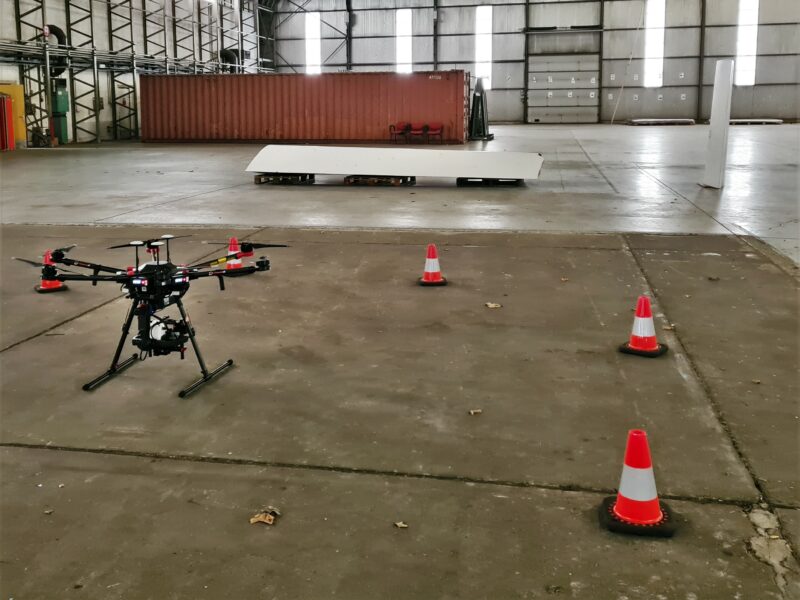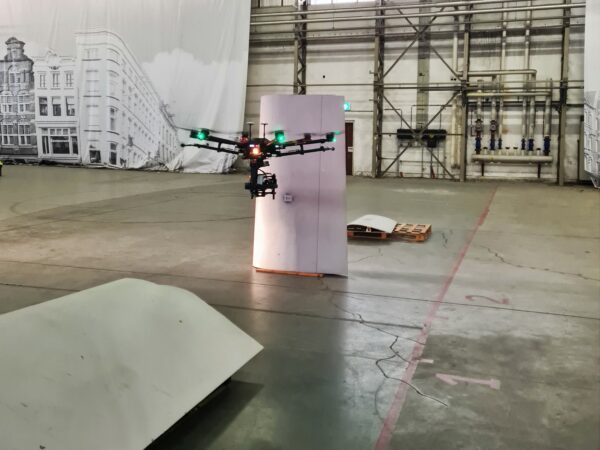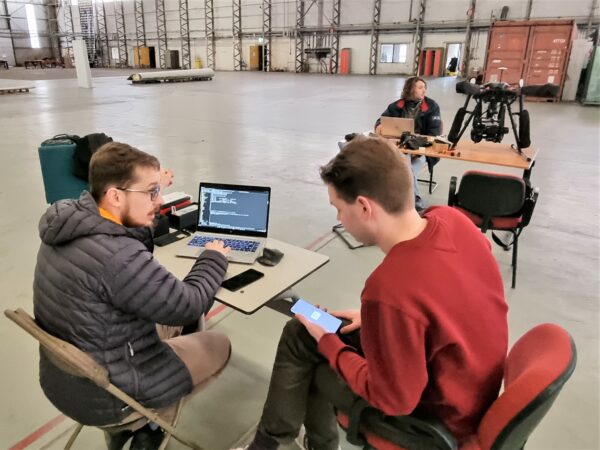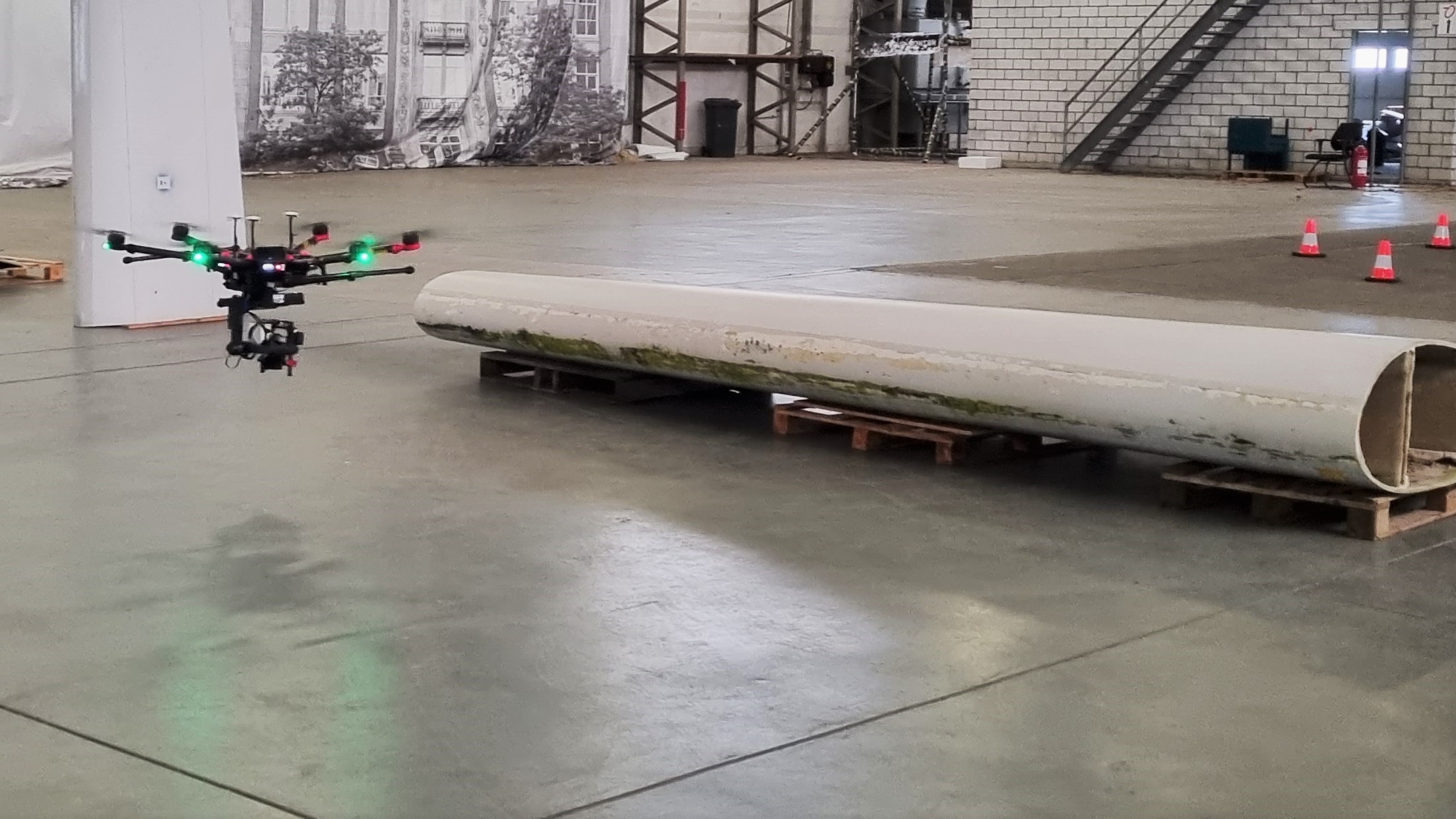Can the deployment of drones help to make wind turbine maintenance more efficient? This question was the central focus of recent research by TNO utilising Do IoT Fieldlab’s 5G facilities. The Groningen fieldlab working on 5G, 5Groningen, was also involved.
Fully automating and digitising wind farm maintenance without human intervention is yet to come. But the first steps have already been taken. As a Senior consultant for wireless networks at TNO, Ljupco Jorguseski is responsible for strategic choices in testing and research. “For the maintenance of wind turbines, you need to train people, who examine each wind turbine to see if any wear and tear is visible,” Ljupco explains. “That is labour-intensive and therefore expensive. This already is the case for wind turbines on land, but at sea it becomes even more complicated. That is why we are investigating how to perform the maintenance check with drones and AI (Artificial Intelligence).”

Longer lifespan
Once damage is identified, it can be repaired quickly. This significantly extends the lifespan of a wind turbine. A small damage can quickly become much larger. Which is why regular inspections are important. Apart from the economic aspect, sustainability also plays a big role: the blade of a wind turbine is quite large and requires a lot of material. Inspections with drones are already being carried out, but this also consumes a lot of time and manpower. Ljupco: “A pilot flies a drone and takes many photos of the turbine parts. These photos are stored, after which an expert reviews the images at a later moment. Sometimes the expert wants to get a better look at a particular detail and needs to zoom in more. In that case, a new inspection is needed with a drone taking pictures. We have also devised, in collaboration with TU Delft, several test environments. In fact, it is important that you do not only conduct research on a theoretical base and with simulations, but actually use measurements.”
It would be more efficient if the expert could instantly watch the images remotely. A fast connection with very little delay is essential in this respect. And that is exactly what 4G does not yet allow: there is too much delay in the transmission of large amounts of data. And then there is another bottleneck: legislation. “To ensure safety, the pilot must always be able to see the drone. This guarantees the opportunity to intervene if something unexpectedly goes wrong. At the time of our research, drones were not yet allowed to be flown ‘behind the visual line of sight’, as it is called in trade language. Recently, however, this has become possible under certain circumstances. At the Unmanned Valley fieldlab in Katwijk, a so-called flight corridor has been created that allows experiments with drones at sea. This offers us great opportunities. In fact, they are also hosting 5G facilities from Do IoT Fieldlab there, so we can test with ultra-short response times. While flying, the expert can be somewhere else, but can watch the drone images right away.”
In the first phase of the research, testing focused on getting the inspection operational with 5G. This was accomplished in a controlled environment to keep costs limited, explains Ljupco. “Instead of flying towards a wind turbine, we put one of those huge blades in our experiment hall. Inside, we could test properly with the drone and were not affected by weather conditions such as wind or precipitation. In the process, we took a creative approach to the camera. We used a drone suitable for inspecting solar panels and had to set this one up differently, for a shorter response time, for example.” TNO was the appropriate partner here, because experts in the field of wind turbines could collaborate directly with the mobile communication technology experts. The research results are promising for the future. It proves to be well possible to carry out drone inspections with 5G, with an expert directly assessing the images. This has been tested, validated and demonstrated.

Future
As far as TNO is concerned, it is time for the next step. Ljupco: “The continuation can start soon. I am convinced that this will also work outdoors. With limited investments, we can start introducing drone inspections in the Netherlands, with 5G technology in a safe and reliable way.” This is already a start, but Ljupco, together with other experts, is also looking further into the future. “In the future, we will be able to set up periodic inspections completely autonomously. At large onshore and offshore wind farms, there will be charging stations for the drones in order to always have drones available for inspections. With AI image processing, we may be more accurate in detecting whether there is any damage on the wind turbine. And we are preparing for the next generation of mobile communications: 6G. Together with 5Groningen, Do IoT Fieldlab and other partners, among others, we want to maintain the Netherlands’ position as a leader in telecoms. We hope the regulations for drones will be further developed to enable more extensive experiments. In any case, we are ready to go!”
More information
- Information on TNO’s site about this research


